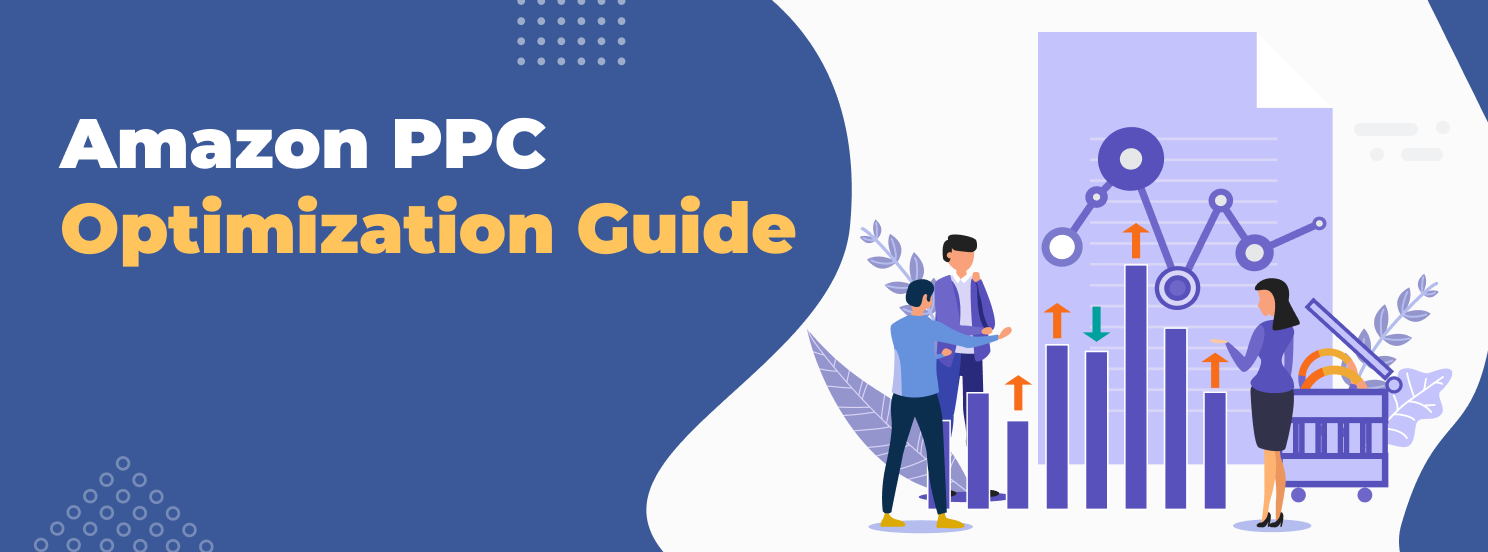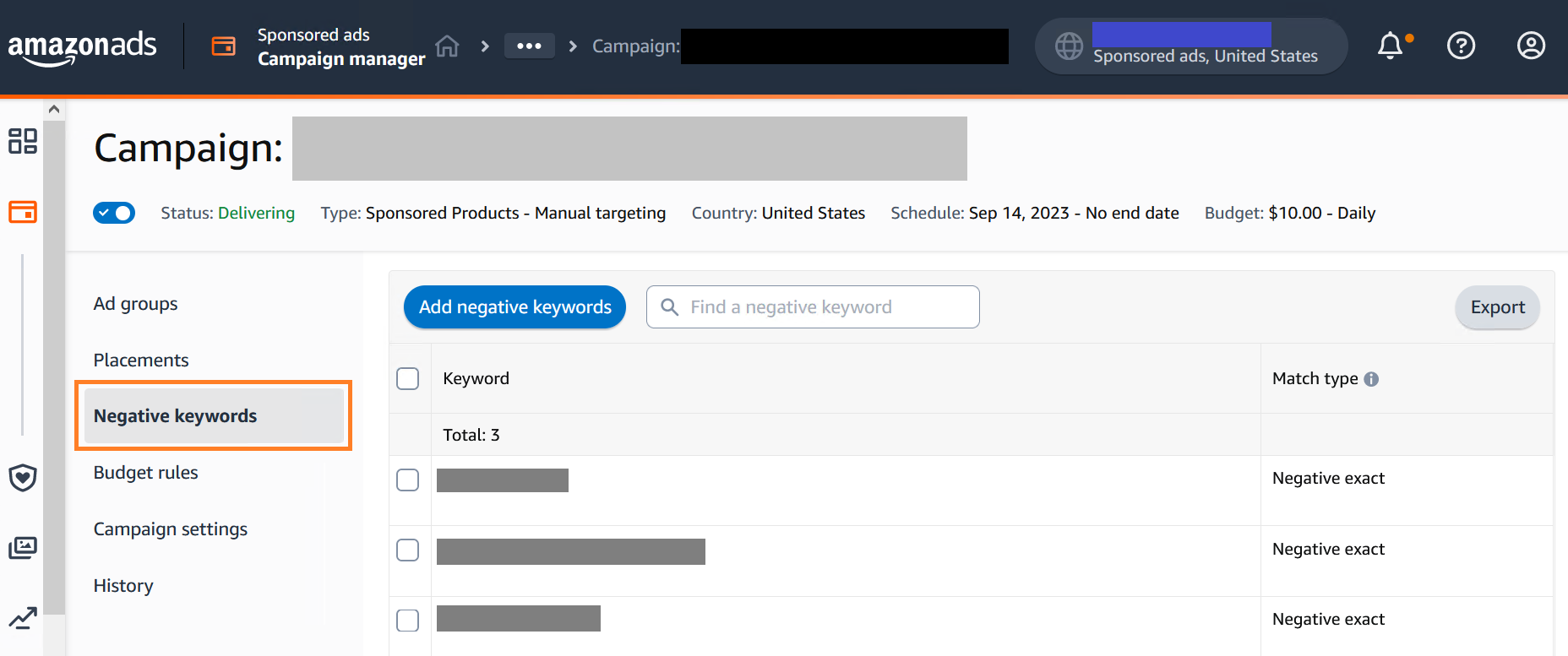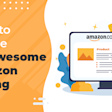
Optimizing Your Amazon PPC: Key Tactics for Better Ad Results
The competition on Amazon is fierce, and driving traffic to your store can be challenging. Thankfully, Amazon advertising can help increase your visibility by targeting the right audience. However, it's crucial to optimize your ad campaigns to make your investment as efficient as possible.
In this article, we'll explore how to enhance the performance of your ads and implement additional tactics to boost sales.
Table of contents
What is Amazon PPC Optimization?
Amazon PPC optimization is a set of strategies aimed at refining ad campaigns to maximize your return on investment. In this guide, we focus on optimizing Sponsored Product ads, which are particularly suitable for beginners, although the methods discussed can also be applied to other PPC formats.
Targeting the right audience can drive traffic and increase sales, but incorrect PPC setup can lead to paying for uninterested clicks, making your ads unprofitable. For example, using broad terms like "shoes" for women's sneakers can attract irrelevant clicks. That's why it’s crucial to monitor your ads’ performance and adjust your strategy accordingly. Let's explore how to do this effectively below.
Monitoring and Analyzing PPC Performance
One way to check your PPC performance is through the ‘Advertising’ section of your Amazon Seller Central account. Under ‘Campaign Manager’, you can find ad reports with various metrics and statistics. For beginners, navigating all of this data can be overwhelming, so here are the main parameters to assess:
Advertising Cost of Sale (ACoS): This is a key indicator for those aiming to maximize their sales with minimal spending, which helps you determine if your investment is financially worth it.
Formula: ACoS=(Ad Spend:Ad Revenue)×100.
For example, if you spend $100 on ads and generate $200 in sales from those ads, your ACoS is 50% (meaning you spent 50% of your revenue on advertising). A lower ACoS indicates greater efficiency, as spending less on advertising allows you to generate greater profits from sales.
Total Advertising Cost of Sale (TACoS): This metric shows how much money you spend on ads compared to all the money you make from sales, including both sales from ads and those that happen naturally when people find your product.
Formula: TACoS Score = (Advertising Spend ÷ Total Revenue) x 100.
For example, you spent $100 on ads and generated $50 in direct sales, but also received $950 from organic sales due to improved product ranking. This indicates that effective ad promotion can lead to valuable organic sales, making your advertising investment worthwhile, despite higher initial costs compared to direct sales.
Click-through Rate (CTR): This metric indicates how effective your ad is at encouraging users to click on it.
Formula: CTR=(Number of Clicks: Number of Times Your Ad Was Shown)×100.
For example, if the CTR is low, it could mean that your ad is probably targeting an irrelevant audience. Conversely, a higher CTR indicates that your ad is more relevant and engaging, leading to more potential conversions.
Conversion Rate (CVR): This metric indicates how many orders you receive for the number of clicks your ad generates.
Formula: CVR=(Total Orders: Number of Clicks)×100.
For example, if you receive five orders from 10,000 clicks, your CVR is low. Typically, CTR and CVR are analyzed together. A high number of clicks with low conversion may indicate issues with your listing that need improvement, such as customer preferences or irrelevant keywords.
Cost-per-click (CPC): CPC is a metric that indicates the need to adjust your ad strategy. If your daily budget depletes rapidly or your ad expenses exceed your returns, lowering your CPC becomes essential.
Formula: CPC=(Ad Expenses: Number of Clicks).
For example, if you spend $100 on ads for a $7 product and receive 10 clicks, your CPC would be $10 per click. This indicates that you are overpaying for ads because the cost-per-click exceeds the potential return you get. A lower CPC means you pay less for each click, maximizing your ad budget's effectiveness and potential return on investment.
Monitoring these metrics regularly helps sellers identify the need for PPC optimizations. By optimizing, you can improve your overall budget management, reducing your costs and enhancing the potential for sales.
How to Optimize Your Amazon PPC Campaigns
Amazon PPC Optimization involves focusing on several critical aspects. Here's a concise guide on the key steps needed to advertise with maximum efficiency:
1. Choose Relevant Keywords
Choosing the right keywords for Amazon PPC campaigns can directly impact your ad visibility and sales. This ensures that your products are more likely to appear in relevant search results, boosting your chances of attracting potential buyers and driving more sales.
Finding the Most Frequently-Searched Keywords
To identify a full range of product search phrases used by users, utilize the AMZScout Amazon Keyword Search tool, which helps you assess search volume and uncover new keyword ideas. Here’s how to use it:
1. Go to the Keyword Search page. Enter your email address to start a free trial.
2. Search for keywords. Enter a product name or a related phrase in the search bar. You can specify optional criteria like keyword count and search volume if necessary.
3. Get a list of keywords. Click Find Keywords and examine search trends over time, estimate the average Amazon keyword CPC (Cost-Per-Click), and assess average monthly sales for relevant products on the first page of search results.
You can also explore different word variations and synonyms related to the product. Prioritize the most relevant keywords from this list for advertising, which can be more effective.
Spying on Your Competitors
For new sellers, it might be especially useful to gain insights into other successful FBA sellers' tactics, which can help you find new keyword ideas for your own ads and increase your product visibility.
To learn which keywords your competitors are using, try the AMZScout Reverse ASIN Lookup. Simply enter any product’s ASIN, and you'll receive a list of search terms along with detailed statistics such as search volume and average monthly sales.
Here's how to use it:
1. Go to the Reverse ASIN Lookup.
2. Search for keywords. Enter competitors' ASINs (which can be found in the Product Details section of the Amazon page).
3. Receive keywords and statistics. Click Find Keywords and review data filtered by 10 parameters, such as search volume and relevance.
Adding new keyword ideas to PPC is just the beginning. Keyword optimization also involves monitoring their effectiveness in Campaign Manager, boosting exposure for effective keywords, and eliminating ineffective ones. Optimizing keywords helps you manage your ad budget by attracting more relevant clicks at a lower cost, thereby improving ad performance without overspending.
2. Use Negative Keywords
When setting up Amazon PPC, you also have the option to include negative keywords to avoid targeting the wrong audience. It's recommended to use this feature to ensure that your ads reach the right customers.
You can use the keyword list generated from the Keyword Search and Reverse ASIN Lookup to create your initial set of negative keywords. For instance, if you sell running shoes and use the broad keyword "shoes," it’s important to exclude irrelevant terms like “high heels”, “formal”, or “wedding shoes” to optimize your ad budget.
After launching, it's crucial to review the search terms report regularly, and identify irrelevant queries that have received impressions and clicks on your ads but did not result in sales. Adding such queries to your negative keywords helps enhance the effectiveness of your ads.
By using negative keywords, you can avoid unnecessary clicks and make your paid clicks more effective, ensuring your ad budget is spent on the most relevant audience.
3. Set Up Your Ads Correctly
The settings you choose when setting up your ads can significantly impact their effectiveness by directly influencing who sees your ads and how relevant they are to that audience. Here are three key points to consider:
Manual vs. automated targeting: Decide whether Amazon should select keywords or products for your ads, or if you want to choose them yourself.
Targeting keywords vs. products: Determine whether you'll focus on specific keywords or target entire product categories.
Match types: Choose from broad, phrase, or exact match types to control how precisely your keywords align with user search queries.
You can also create multiple campaigns and ad groups for one product, each with different strategies. This approach helps you identify what works best for your customers. For more detailed guidance, please refer to this video.
These choices will determine how effectively your ads reach and convert your target audience. By identifying the right strategy, you can maximize its performance and drive more sales.
4. Manage Your Budget
To avoid exceeding your overall ad budget, it's crucial to set a daily spending limit. You can adjust your daily budget based on your ad performance, which means you’ll need to monitor its key metrics carefully. Additionally, consider increasing your budget and promoting seasonal products before holidays like Christmas, or during peak periods such as Black Friday. Monitor optimal advertising hours when customer engagement and sales are highest to maximize your ad effectiveness.
Monitor your Advertising Cost of Sales (ACoS) and Total Advertising Cost of Sale (TACoS) to assess their cost-effectiveness and adjust your budget. Based on the performance of your campaigns or keywords, you can gradually increase funding for successful ones and avoid spending on less effective ones. This approach helps use your ad budget and boost sales effectively.
5. Setting Up Bids
Another crucial aspect of optimizing PPC is bid management. While a daily budget limits your daily spending, bids directly influence where and when your ads appear in search results by determining the amount you're willing to pay for each click.
There are various strategies for bid management, with the main factor being which type of bid you choose. Dynamic bids adjust automatically in real-time based on the likelihood of a sale, while fixed bids remain constant.
For beginners, experienced sellers recommend you start with dynamic bids with down only. In this case, Amazon lowers the bid if a sale is unlikely. Fixed bidding is ideal for optimizing strategy once you're more familiar with the process.
To ensure that you're not overspending on ineffective keywords and getting sales from those performing well, it's necessary to monitor your bids daily. This allows you to adjust them effectively, improving your ad's performance.
6. Monitor Keyword Performance
PPC can significantly boost your product's organic search result ranking. Tracking keyword trends over time is crucial due to fluctuations in keyword popularity that affect visibility. The AMZScout Keyword Tracker analyzes historical data on keyword rank, page position, and competitor performance, enabling sellers to monitor changes in keyword rankings effectively.
Tracking Keyword Performance
Here is a short tutorial on how to use this tool:
1. Go to the AMZScout Keyword Tracker.
2. Add products to the tracker.
Select the Amazon site of your preferred country.
Click Add Product and enter ASIN(s).
Select how often you want to monitor changes (every 1-24 hours).
3. Choose the keywords you wish to monitor. Click the + icon to save them.
4. Check the performance metrics of the tracked keywords regularly. This way, you can track changes in keyword rankings to optimize your marketing campaigns effectively. By identifying which keywords are performing well or declining, you can adjust bids and allocate ads budget more strategically.
Constant monitoring of your PPC campaigns helps you understand what works and what doesn't, leading to cost reduction and improved effectiveness over time. As your store becomes better established, you'll gain insights that can further refine your advertising strategy, ultimately boosting sales and profitability.
What Else Can Help to Increase Your Amazon Sales?
Boosting your product visibility on Amazon can also increase your sales significantly. Here are some tips from top sellers:
SEO-Optimization of your listing: Incorporate relevant keywords into your title and product description for higher search rankings. Consider using AMZScout's AI Listing Builder to help you generate compelling, SEO-optimized text in seconds. This tool saturates listings with either manually-added or automatically-retrieved keywords from competitors, all while adhering to Amazon's formatting and character limits.
Use high-quality images: Ensure that your images are high-resolution to allow for zooming. Amazon recommends at least five photos for each product, showcasing it in use. Include separate images for each color or pattern, and keep them in the same style to maintain a professional look.
Use A+ Content: If you’re enrolled in Amazon’s Brand Registry, you can enhance your product listings with A+ Content. This feature enables you to add additional text placement to images, and incorporate videos, comparison charts, and more to showcase the benefits and unique features of your product effectively.
Get reviews: To build credibility, use Amazon’s Request a Review button. Check customer reviews regularly and use feedback to improve your product quality and service. Address concerns promptly to boost customer satisfaction and loyalty.
Adjust your price: Monitor your competitors' performance, demand, and seasonal trends to adjust your pricing accordingly. This way, you can maintain a balance between competitive pricing and profitability, ensuring sustained business growth.
While you are likely to see immediate results after implementing these strategies, the most significant changes come from continuous optimization. For optimal efficiency, combine these tactics with running Amazon PPC campaigns. This dual approach will enhance your online visibility and increase your potential for sales.
Conclusion
Amazon PPC requires ongoing monitoring to ensure optimal performance. Use the AMZScout toolkit to help you identify and track both effective and ineffective keywords and refine your ads. By understanding what works and what doesn’t, you can avoid unnecessary spending and maximize your investment.











